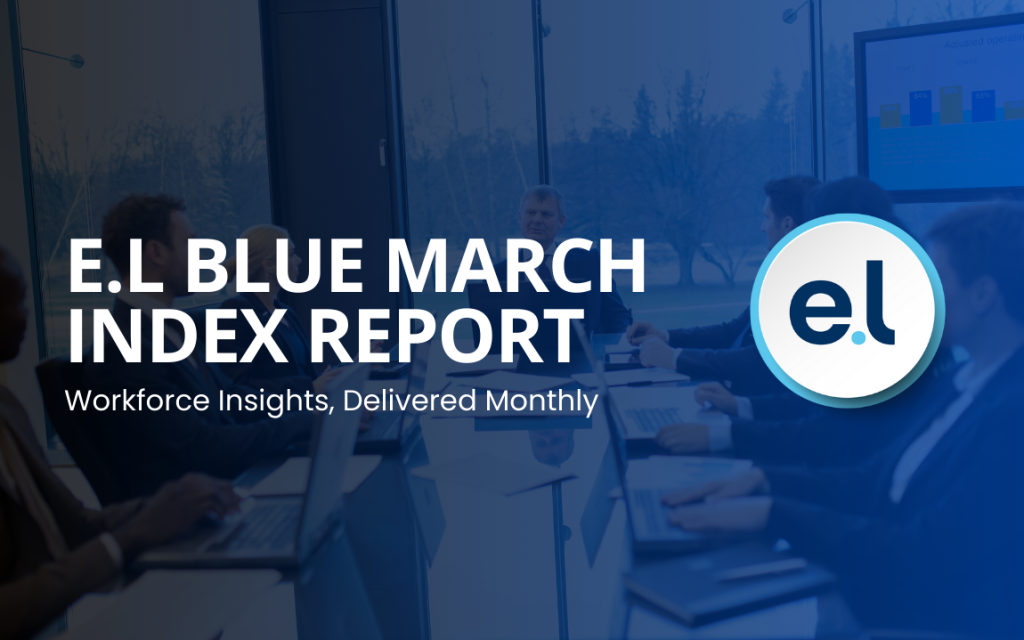Executive employment in Australia fell a further 3 per cent in February to its lowest point in the past five years.
Falls are across the board except for accountants who are in high demand to grabble with businesses financial stress and liquidations.
Employment falls are likely for the foreseeable future unless there is some government initiatives to address productivity.
Executive employment is on a knife-edge as typically businesses are sitting on their hands as they do when an election is looming.
Financial Managers in High Demand Amid Economic Uncertainty
Mr Grant Montgomery, Managing Director of E.L Consult, a leading executive search firm that has researched and published the E.L. Executive Demand Index for over 25 years, said:
“Not surprisingly the E.L Index measure of employment for managers in the Australian economy has taken a dive.
“While only a 3 per cent fall nationally, this hides the more granular declines in just about every sector apart from financial managers.
“If it wasn’t for a very robust demand for accountants, the total national employment rate of executives would have dropped much more severely.
“I think that many in the business sector are battening down the hatches in expectation that things are going to get worse.
“Inflation, with government spending and election promises, is not going to slow down for some time and the cost of every business input, from energy down, are taking massive hikes.”
Businesses Shift Focus from Growth to Cost-Cutting
Mr Montgomery said the emphasis for business has turned from growth to cost-cutting.
“This helps to explain the increasing employment of accountants and other types of financial managers.
“Many companies are grappling with increased costs and declining revenues and that is where the accountants need to ramp up reporting and closely analyse costs and search for potential savings.
“That there are record numbers of companies going into management and even liquidating drives up the need for more financially skilled executives.”
Government Productivity Issues Impacting Business and Investment
Mr Montgomery said the government in Australia has shown no interest in addressing productivity growth, which is essential to reversing the current economic decline and a major key in addressing inflation.
“The Federal Government is crowing about its reduction in costs in relation to using contractors, but this has been more than counteracted by the thousands of new, almost indentured, public service employees that have been taken on, particularly in Canberra.
“All of these public servants need to justify their existence and, at the moment, it seems that the justification is simply to pile on more and more green and red tape on businesses and investment.
“Just about everyone you speak to is waiting months, even years for some government department or another to address registration or approval issues that could be solved in minutes.
“It is not because there are not enough government employees because Albo has increased them by 30,000, but because productivity in the public sector is at an all-time low. Could this be due to a lack of time supervision as they continue to work from home?
“The Government is not making any positive measures towards productivity at a policy level and is actually harming productivity at the coalface by putting more walls in front of businesses trying to grow.
“McKinsey has reported that business investment is at recession levels and Australia’s productivity growth is now 30th out of the 35 wealthier countries.”
Property Sector Challenges and the Housing Shortage
“The property sector is a good example. Property contributes to the national economy massively but successive state and federal governments have been milking this sector for all its worth and at the point of killing this once golden goose.
“Huge and increasing taxes, charges, approval delays and other barriers to the property development have made this sector a poor second choice for most investors. It is little wonder that there is a shortage of rental property to the point of it becoming a social issue.
“All this is happening at a time of a major housing shortage and a huge immigration intake.”
State and Industry-Specific Employment Trends
Most states and territories fell, led by Victoria among the large states and the ACT among the smaller regions.
Among the sectors, the financial sector was the only one to record a positive result.
Marketing was the weakest, with government sector advertising falling. Information Technology was also at the lower end, again with government sector advertising falling the most.
Call Grant Montgomery on +612 9221 6688 or 0414926688 for further details
February 2025 Statistics
February 2025 National Index
February 2025 National Index: 493
Same period last year (February 2024): 543
Percentage change over last month: -3%
National Summary
The executive job market has taken a further fall as the economy stands on a knife-edge before the election. As the burgeoning federal government sector waits eagerly for the beginning of the pre-election caretaker period, the Index fell a further 3 per cent in February to be near its lowest point in the past five years.

National Demand for Executives Over Last Seven Years
The executive demand long-term trend is at an inflection point, with some gains over the holiday period counteracted by the losses in February.


State by State Comparison
Most states and territories fell, led by Victoria among the large states and the ACT among the smaller regions.

Employment Trends for Executive Groups
Among the sectors, the Financial sector was the only one to record a positive result. Marketing was the weakest, with government sector advertising falling. Information Technology was also at the lower end, again with government sector advertising falling the most.
February 2025 E.L Finance Index
February 2025 E.L Finance Index: 832
Same period last year (February 2024): 857
Percentage change over last month: 8%
The stabilisation of Financial positions in 2024 has continued into 2025, with the index rising 8 per cent in February.
The EL Index dropped away in 2023, but since then has seemed range-bound as the emphasis on cost-cutting and financial management has buttressed demand.
Every state and territory moved higher over the month except for the ACT, which dropped away heavily.


February 2025 E.L Engineering Index
February 2025 E.L Engineering Index: 248
Same period last year (February 2025): 248
Percentage change over last month: -7%
Engineering recorded a 7 per cent decrease compared with the prior month, leaving it in the middle of the pack in terms of sectoral performance.
However, the trend for the Engineering index continues lower, a trend that began way back in February 2023. This is disturbing, given the importance of Engineers in helping navigate large nation-building projects.
Although the smaller states and territories did relatively well over the month, the losses in the powerhouse, larger states were more than enough to create the overall loss.


February 2025 E.L Management Index
February 2025 E.L Management Index: 673
Same period last year (February 2024): 790
Percentage change over last month: -2%
The Management sector saw a small decrease in November, dropping 2 per cent after the relatively large gains at the back end of 2024.
The Management sector remains at the bottom of its recent trading range, having been affected by a reduction in government sector positions that previously had increased.
Losses in Victoria and Queensland were enough to create the overall negative result, although New South Wales and Western Australia were mildly positive.


February 2025 E.L Information Technology Index
February 2025 E.L Information Technology Index: 147
Same period last year (February 2024): 227
Percentage change over last month: -9%
The Information Technology sector’s losses appear to be accelerating, although the month to month continues to be see-saw. In February, the index fell 9 per cent.
The smaller states were actually positive for the month, but New South Wales and Victoria retreated at pace.
The trend for this sector has been negative since the beginning of 2023, despite the fervour surrounding AI.


February 2025 E.L Marketing Index
February 2025 E.L Marketing Index: 511
Same period last year (February 2024): 511
Percentage change over last month: -13%
Although Marketing did pick up some ground over the holiday layover, the February result was down 13 per cent.
Interestingly, the Marketing index has been more successful than other sectors in retaining its trading range over the past two years.
Amid the states and regions in February, New South Wales fell heavily, as did Western Australia. However, smaller states did better.


About the E.L Index
The E.L Index is a comprehensive monthly analysis of employment trends at executive level. An Australian analysis is produced in Sydney and an Asian analysis in Hong Kong and Singapore.
The E.L Index has shown by two separate University studies to correlate strongly with general economic and business trends. It is featured by most of the major news services and is closely followed by government and central bank analysts.
The E.L Index is actually a combined national index of all executive demand made up of five separate indices; E.L Finance Index, E.L IT Index, E.L Management Index, E.L Marketing Index and the E.L Engineering Index.
The National and specific career group Indexes are shown as relative indexes recording the monthly demand activity for executive positions in the current month against the demand in a historical base period which is normalised to 100. The historical base period used was the average of the last quarter of 1992 which research showed to be the bottom of that downturn.
By averaging to a historical base period the comparison of, say, June 1994 to June 2000 is meaningful, giving a clean, easily understood appreciation of changing investment and economic trends without seasonal obscurity.
The E.L Index utilises data from both print and internet sources and is the only employment index to do so.
The print data is collected from the major employment paper in each state. National papers are not used to avoid “doubling up”. Internet data is not collected off the web sites which can be subject to some error but instead collected through raw data provided by the ISP themselves. Print data has over 15 years of historical data and the internet more than 6 years.
Why Executive Demand is a Primary Lead Indicator?
It is often claimed that unemployment figures and broad-based job vacancy surveys do not give a fair impression of what is occurring in executive ranks. The E.L Index addresses this and has some interesting correlative and predictive qualities. Such as:
- Employment of management usually precedes the employment of skilled and unskilled workers.
- Employment of engineering executives precedes major capital investment.
- The division between various management sectors gives an indication of which sectors of the economy are experiencing growth or decline.
- Compares month by month changes in the public and private sector as well as monitoring government expenditure patterns.
- Makes regional comparisons after allowing for population differences.
- It shows a ‘rate of change’ and can therefore be realistically compared to general economic and employment growth unlike some surveys that report absolute numbers.
- Core data is collected on an actual expenditure of business and government, not on a respondent’s opinion or confidence level.


